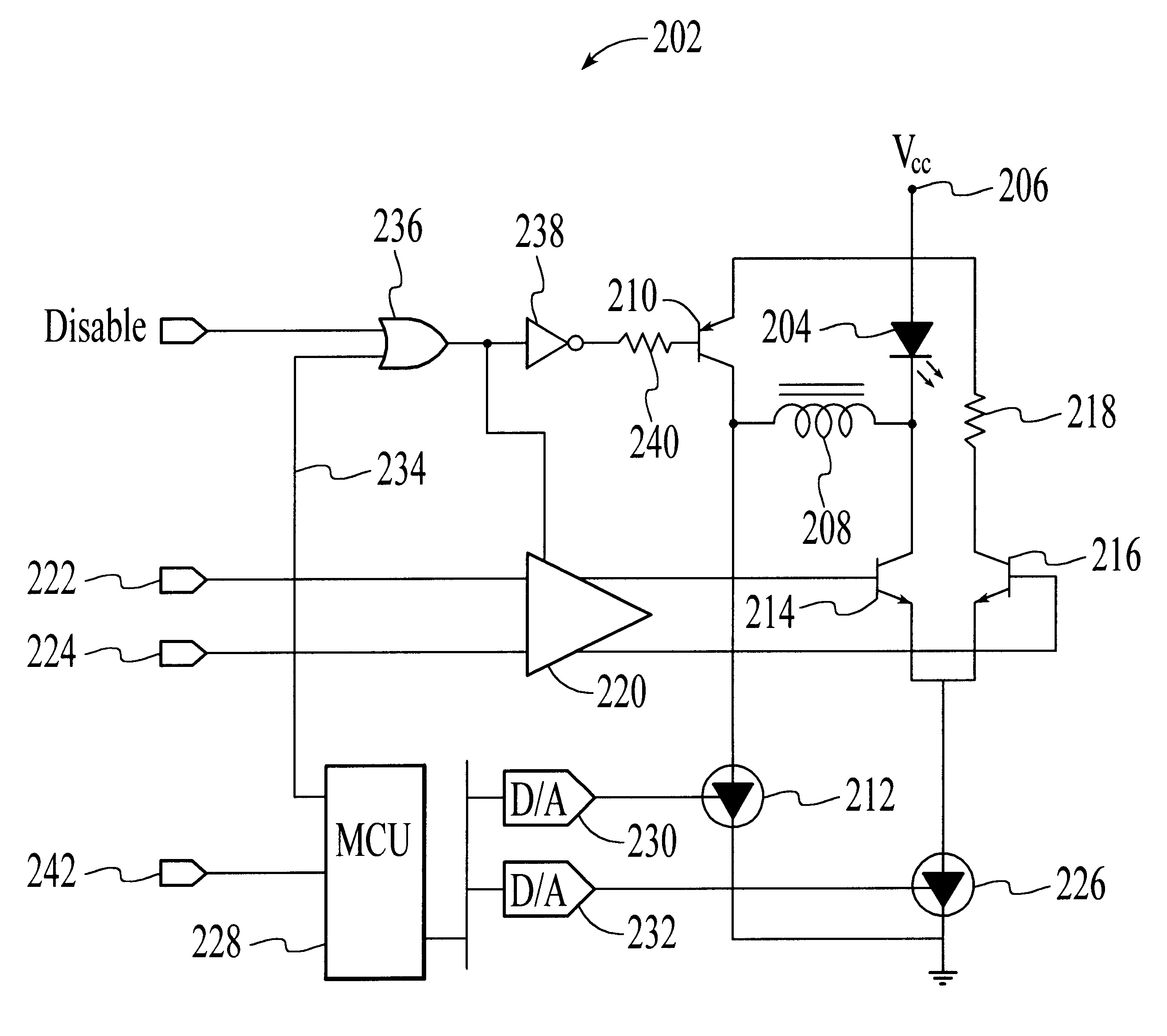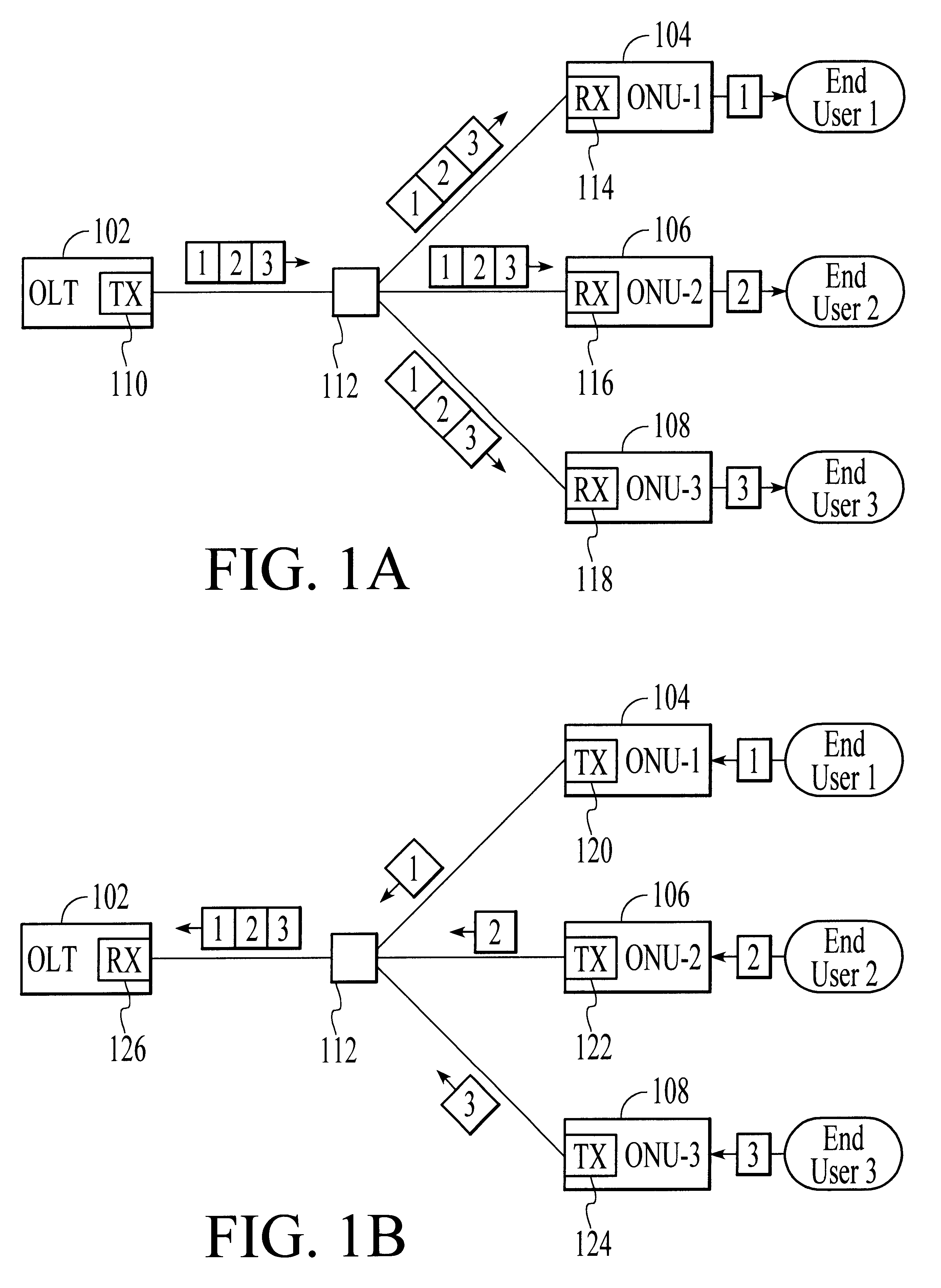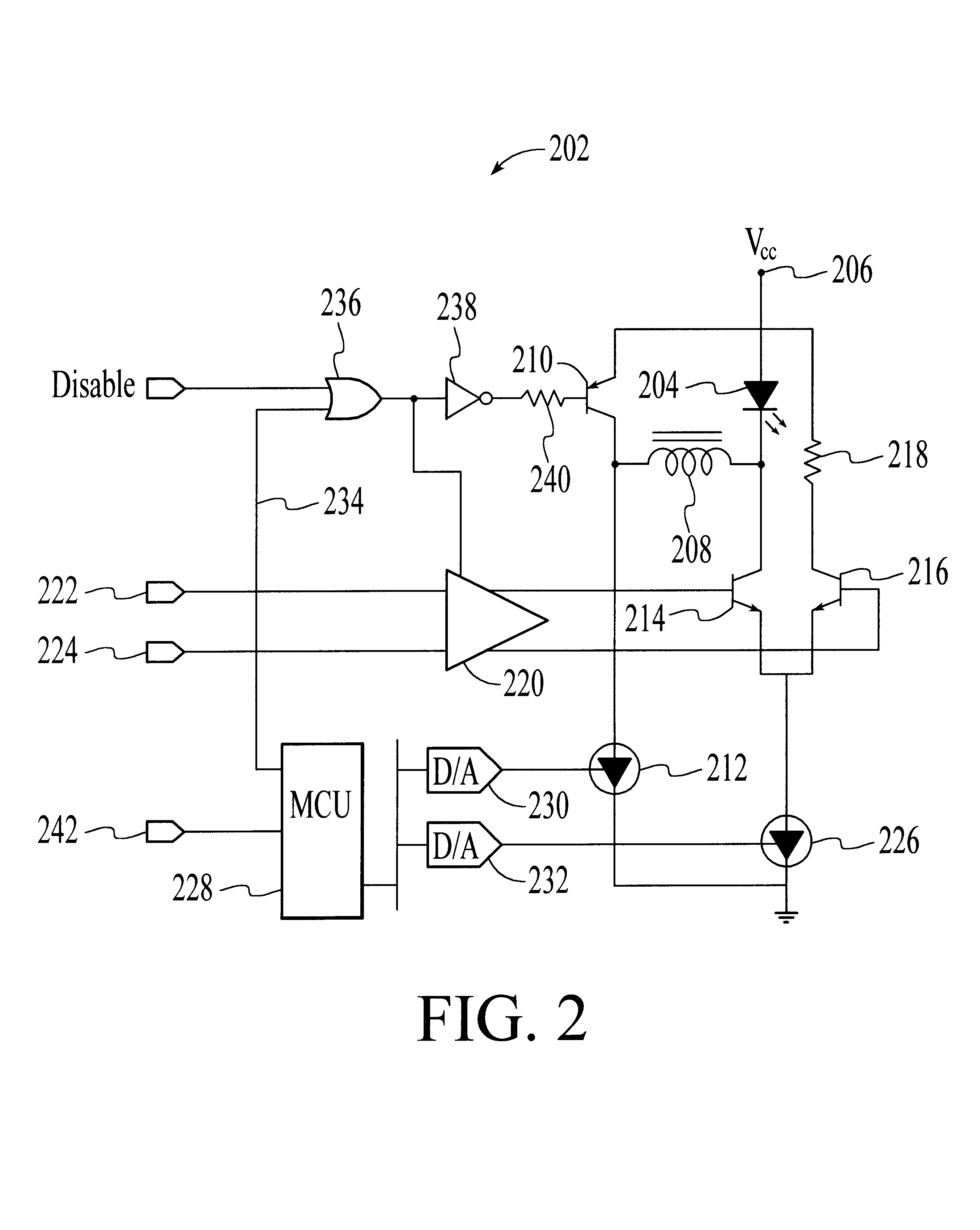Laser diode optical transmitter for TDMA system with fast enable and disable times
a laser diode and optical transmitter technology, applied in the field of optical transmitters, can solve the problems of increasing background noise, reducing the overall bandwidth of the pon for data transmission, etc., and achieve the effect of fast enable and disable of the laser diode, reducing the effect of parasitic capacitance, and high impedan
- Summary
- Abstract
- Description
- Claims
- Application Information
AI Technical Summary
Benefits of technology
Problems solved by technology
Method used
Image
Examples
Embodiment Construction
With reference to FIG. 2, a laser diode optical transmitter 202 for use in a passive optical network (PON) system that utilizes time division multiplex access (TDMA) is shown. The optical transmitter is characterized by fast enable and disable times so that the length of the guard bands used by the system can be minimized. In addition, the optical transmitter is designed to prevent, or significantly reduce, light leakage when disabled. Furthermore, the optical transmitter is designed to modulate output optical signals with sufficient speed for data transmission in the Gigabit per second range.
The optical transmitter 202 includes a laser diode 204 that is driven to emit binary optical signals. As illustrated in FIG. 3, the laser diode can be driven to generate light signals having an optical power level of P1, which are optical representations of “1” signals. Alternatively, the laser diode can be driven to generate light signals having an optical power level of P0, which are optical ...
PUM
 Login to View More
Login to View More Abstract
Description
Claims
Application Information
 Login to View More
Login to View More - R&D
- Intellectual Property
- Life Sciences
- Materials
- Tech Scout
- Unparalleled Data Quality
- Higher Quality Content
- 60% Fewer Hallucinations
Browse by: Latest US Patents, China's latest patents, Technical Efficacy Thesaurus, Application Domain, Technology Topic, Popular Technical Reports.
© 2025 PatSnap. All rights reserved.Legal|Privacy policy|Modern Slavery Act Transparency Statement|Sitemap|About US| Contact US: help@patsnap.com



